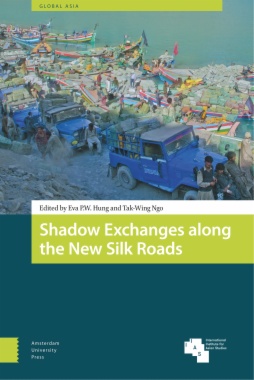Long before China promulgated the official One Belt One Road initiatives, vast networks of cross-border exchanges already existed across Asia and Eurasia. The dynamics of such trade and resource flows have largely been outside state control, and are pushed to the realm of the shadow economy. The official initiative is a state-driven attempt to enhance the orderly flow of resources across countries along the Belt and Road, hence extending the reach of the states to the shadow economies. This volume offers a bottom-up view of the transborder informal exchanges across Asia and Eurasia, and analyses its clash and mesh with the state-orchestrated Belt and Road cooperation. By undertaking a comparative study of country cases along the new silk roads, the book underlines the intended and unintended consequences of such competing routes of connectivity on the socio-economic conditions of local communities.
- Cover
- Table of Contents
- Preface
- Abbreviations
- 1. Introduction
- Informal exchanges and contending connectivity along the shadow silk roads
- Tak-Wing Ngo and Eva P.W. Hung
- 2. Fragmented sovereignty and unregulated flows
- The Bangladesh-China-India-Myanmar corridor
- 3. In and out of the shadows
- Pakistan-China trade across the Karakoram Mountains
- 4. Circulations in shadow corridors
- Connectivity in the Northern Bay of Bengal
- 5. Past and present
- Shadows of the China-Ladakh-Pakistan routes
- 6. Formal versus informal practices
- Trade of medicinal and aromatic plants via Trans-Himalayan Silk Road
- 7. Formal vs. informal Chinese presence
- The underbelly of hope in the Western Balkans
- 8. State approaches to non-state interactions
- Cross-border flows in Xinjiang and Kazakhstan
- 9. Integration in post-Soviet Central Asia
- Shadow-economy practices and the cross-Eurasian flow of commodities
- 10. In the shadow of constructed borderlands
- China’s One Belt One Road and European economic governance
- 11. High-end globalization and low-end globalization
- African traders across Afro-Asia
- Index
- List of Figures and Tables
- Figures
- Figure 1.1 Map of OBOR
- Figure 2.1 A section of Asian Highway 1
- Figure 2.2 The ‘Indo Myanmar Friendship Gate’ marks the border crossing between Moreh (India) and Tamu (Myanmar)
- Figure 2.3 Indian forces patrolling Asian Highway 1 in an armoured vehicle, Manipur (India), 2012
- Figure 2.4 Crossing the China-Myanmar border through a gap in the border fence, Yunnan (China), 2010
- Figure 2.5 Chinese quilts and other commodities piled on top of a four-wheel drive on their way to market in India, 2012
- Figure 2.6 Jade mined in Myanmar offered for sale in a Yunnan (China) border town, 2010
- Figure 2.7 Smugglers are poised to rush across a grassy patch at a sign from the other side that goods have arrived. The grass marks the border between India (left) and Bangladesh, 2002
- Figure 2.8 Pushing a load, freshly arrived from Myanmar, deeper into Indian territory, 2012
- Figure 2.9 Long-distance peddlers from Myanmar on a road near the Bangladesh-India border, 2011
- Figure 2.10 A Myanmar trader with merchandise in Manipur (India), 2012
- Figure 2.11 Truck drivers from Myanmar waiting for cargo in a border parking lot in Yunnan (China), 2010
- Figure 2.12 Cross-border shoppers buying household goods in Yunnan (China), 2010; note the bilingual signs in Chinese and Burmese
- Figure 2.13 Chinese timber truck leaving the Myanmar border, 2010
- Figure 3.1 For centuries a branch of the Silk Road passed through the north Hunza village of Misgar
- Figure 3.2 The Afiyatabad Commercial Centre (2700m) is located on the Karakoram Highway, adjacent to the Sost dry port that opened in 2006
- Figure 3.3 Returning Chinese containers passing through Afiyatabad after unloading their cargo at the Sost dry port
- Figure 3.4 New construction in Afiyatabad, a border market along the Pakistan-China border
- Figure 5.1 Ladakh as a highland connect
- Figure 6.1 Average export value of MAPs, 2011/2012 – 2014/2015
- Figure 6.2 Export value of MAPs, 2011/2012 – 2014/2015
- Figure 6.3 Comparison of present annual export value with other studies
- Figure 7.1 Possible points of entry of the New Silk Road into Europe
- Figure 9.1 Divergence in customs statistics of China and its trade partners, 2016
- Tables
- Table 1.1 Contending modes of connectivity
- Table 6.1 Export quantity and export value of MAPs, 2011/2012 – 2014/2015 (%)
- Table 6.2 The formal economy of MAPs sector, 2011/2012 – 2014/2015 (in NRP)
- Table 7.1 Economic characteristics of the Western Balkans, 2015
- Table 7.2 Estimates of shadow economy in the Western Balkans
- Table 9.1 Imports from China to Kazakhstan and Russia, 2008-2016 (USD million)
- Table 9.2 Imports to Kazakhstan from China, EU and other non-EAEU countries, 2008-2016 (USD million)
- Table 9.3 Trends in economic activities, mid-2015 (%)
- Table 9.4 Export of Chinese clothing, footwear and leather goods according to Chinese statistics, 2014-2016 (USD million)

